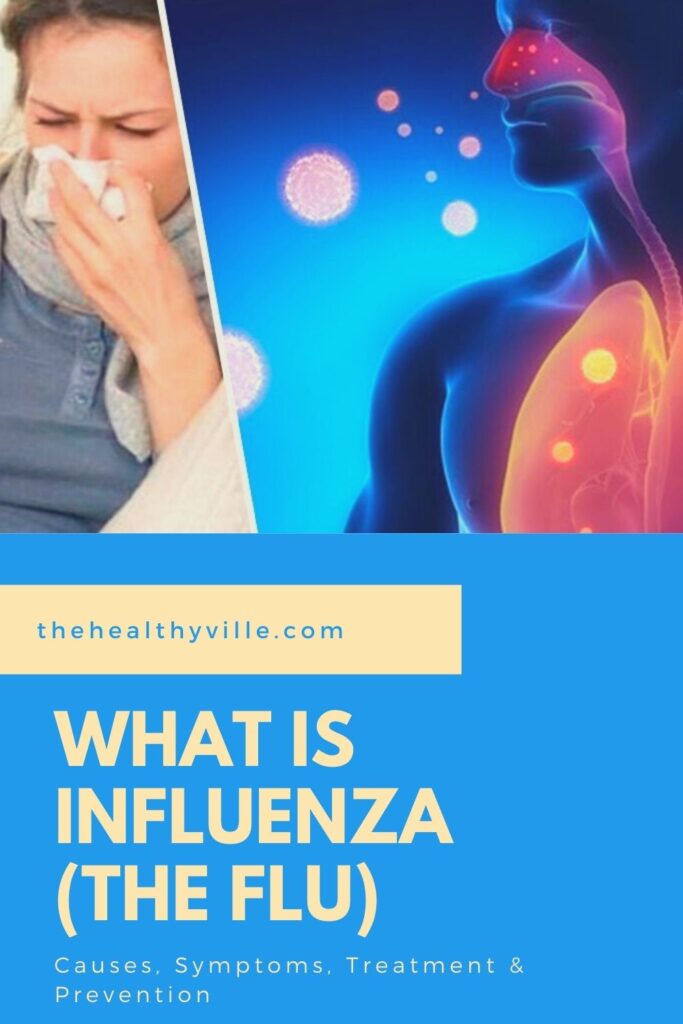What is influenza? What do we know about the flu? Which are its causes and symptoms? How to treat it, or even better, prevent it?
Generally, a seasonal epidemic occurs every year, mainly in autumn and winter, but it also constitutes a global pandemic every 20 or 30 years, causing a high level of morbidity and mortality.
What is influenza?
What is influenza or the flu? It is a viral infection that affects the respiratory system. It is produced by the attack of viruses A, B and C, belonging to the Orthomyxoviridae family. Viruses A and B are from the genus Influenzavirus and virus C from the genus Influenza C.
The disease is transmitted through the air when speaking or through sneezing, coughing and other means that allow the expulsion of particles of nasal discharge, bronchial or saliva, loaded with viruses. It should be noted that the flu usually appears suddenly with a high fever, sore throat, general malaise, among other symptoms that can range from mild to severe intensity.
Causes of the flu
The flu is caused by infection with one of the influenza viruses (A, B, or C). This virus binds to the cells of the mucosa of the upper respiratory tract, thus, it manages to eliminate the first defense mechanism of the respiratory system to, later, achieve the attack in the lower respiratory tract.
In turn, viral infection can facilitate the adhesion of bacteria to epithelial cells, which can lead to a secondary bacterial infection that, in turn, increases the risk of pneumonia.
Routes of transmission of the flu
Flu viruses manage to enter the body through the mucous membranes of the respiratory ducts, mouth or conjunctiva. The main routes of infection of the virus are the following:
- Direct contact with a sick person or contaminated material.
- By air, through aerosol drops released by coughing, talking, or sneezing from a close distance from the infected person.
However, not all people in contact with the virus get sick, some can be transmitters of the infection. The most vulnerable when it comes to contracting it and presenting complications are mainly people with chronic respiratory diseases or with diseases that reduce the immune capacity; in addition to infants, the elderly, and pregnant women.
Symptoms
Flu symptoms develop quickly. The patient begins to feel discomfort 1 to 7 days after coming into contact with the virus.
Most cases appear within 2 to 3 days and disappear within 4 to 7 days after the onset of the condition. In certain cases, the cough and general malaise last for another week or two.
The main symptom is a high fever (between 39 and 41 ° C), and adults often have milder fevers than children. Other symptoms of the flu include:
- Shaking chills.
- Lack of energy.
- Headache.
- Flushed face.
- Cough and sore throat.
- Dizziness, nausea and vomiting.
- Joint pains.
- Nasal congestion and discharge.
Diagnosis
Although discomfort is unavoidable, few cases are at risk of developing into severe flu symptoms. Only if the infection occurs severely, or if there is a risk of complications (such as suffering from a respiratory or chronic disease), is it necessary to see a doctor with flu symptoms.
In fact, the doctor can make a diagnosis after interviewing the person. No need to test. When needed, the doctor uses a test that consists of taking a sample of discharge from the nose or throat. The result of this test is obtained quickly and is used to prescribe specific treatments.
Treatment
The treatment of the flu aims at controlling the symptoms, since the cause is not directly combatable. The main drugs used are analgesics and antipyretics, which relieve pain and fever.
Doctors often give over-the-counter drugs such as acetaminophen and ibuprofen. The use of aspirin is not recommended, especially if the patient is a child. Some over-the-counter cold medications may be helpful in alleviating some of the symptoms.
Antiviral flu treatments, such as oseltamivir and zanamivir, can help patients at risk of complications. Doctors indicate antibiotics as treatment only in the event of a complication from bacterial infections.
Prevention
To avoid getting or spreading the flu, you can take some preventive steps. Although there are no direct measures of action on the virus, the best method to avoid it is the influenza vaccine that you can receive once a year. Other important measures include:
- Wash your hands well.
- Cover your mouth with your shoulder when coughing or sneezing.
- Avoid sharing food, utensils, or bottles.
- Ventilate the home every day for at least 10 minutes.
- Take measures against sudden changes in temperature (such as bundling up well in winter).
- Maintain a balanced diet, which includes food with the necessary nutrients to strengthen the defenses.
Don’t forget to SHARE what is influenza with your friends and family on your social networks!

